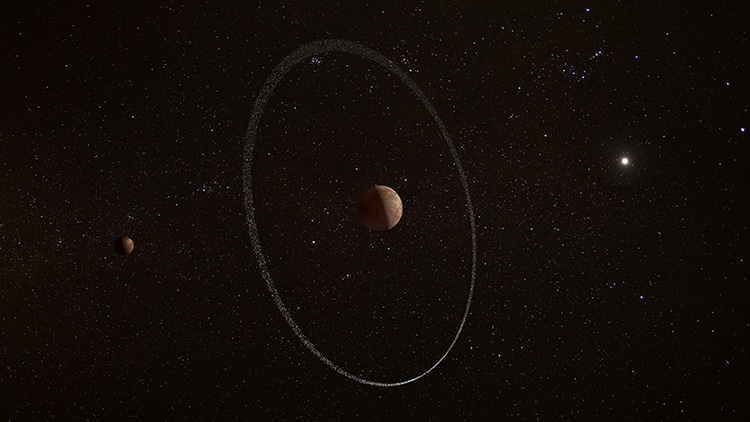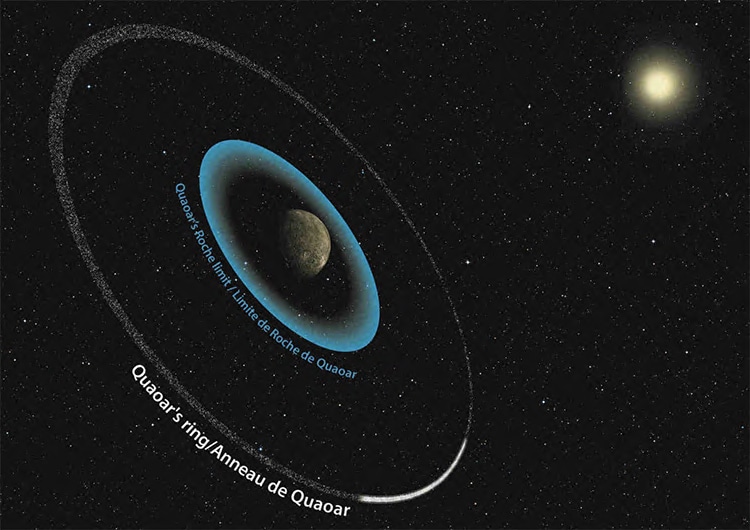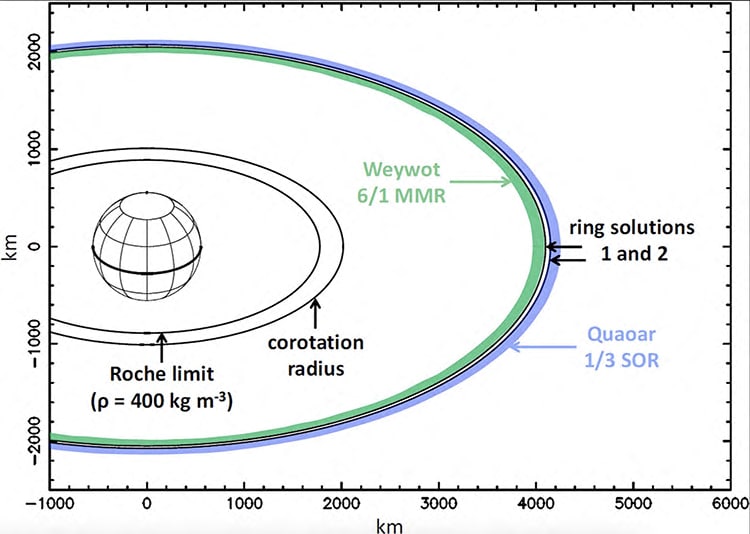Artist rendering of the dwarf planet Quaoar and its newly discovered rings.
(Photo:ESA / CC BY-SA 3.0 IGO)
The Solar System is a source of constant amazement.
As telescope and imaging technology improves, astronomers learn more about distant worlds we can barely see.

Artist rendering of the dwarf planet Quaoar and its newly discovered rings. (Photo:ESA / CC BY-SA 3.0 IGO)
One of these is the icy dwarf planet Quaoar, only a third of the diameter of Earths moon.
Unlike Pluto, however, Quaoar has been discovered to have rings (like Saturn).
What’s more, as announced in a recentNaturepaper, the rings are surprisingly far from the celestial body.

Quaoar’s ring system are beyond its “Roche Limit.” (Photo: Paris Observatory)
Quaoar even has a moon.
However, even with the most powerful telescopes, Quaoar is but a tiny dot.
This was a very surprising discovery.

The dynamical environment of Quaoar’s ring. (Photo:Figure 5/Morgado et al.)
The ring is also very far from the dwarf planet’s central body.
Beyond that distance, it was long thought that a ring would become a moon within decades.
This is about 1,400 miles over the Roche limit.
We should look at this limit again and better understand how the satellites are formed.
It is possible Weywot, Quaoar’s moon, has disrupted the normal gravitational calculations.
It also may be that icy particles in this cold region do not form moons as easily.
But actually this process, of how particles accrete, is really the beginning step of planet formation.
The secrets of Quaoar’s rings may in fact help decipher the secrets of the Solar System’s formation.
Quaoar’s ring system are beyond its Roche Limit.
The dynamical environment of Quaoars ring.
(Photo:Figure 5/Morgado et al.)